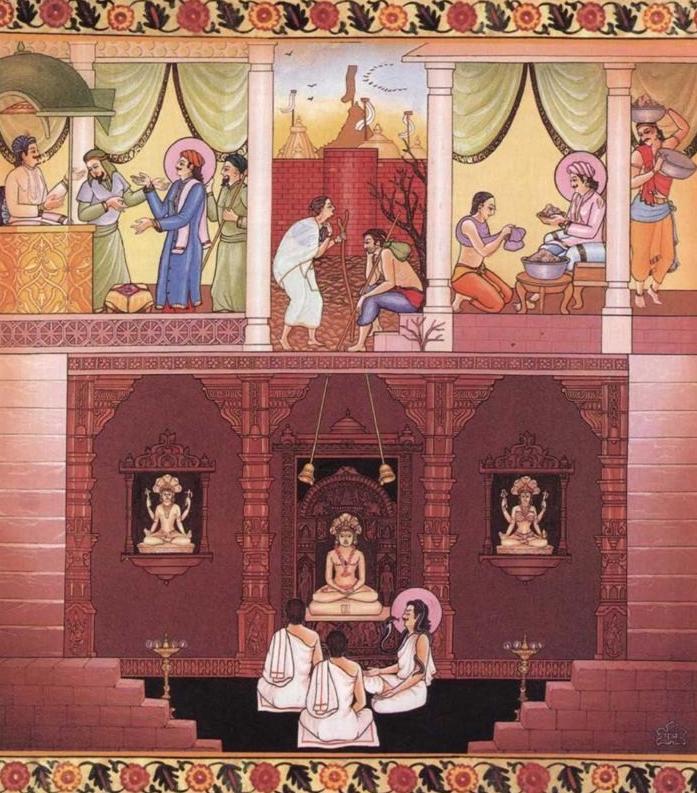A Story of Sheth Shantidas
Nagarsheth (chief, respectable person in a city) Shantidas Jhaveri was a devout person who espoused many a social, religious and cultural cause. Kshatriya (warrior caste) by caste, Shantidas was the son of Sahasrakiran and had forged close ties with Mugal emperors such as Akbar, Jehangir, Shah Jahan, Muradbux and Aurangzeb. He enjoyed the trust of the emperor and was allowed to enter the harems as the official jeweller. It was he who secured protection of the centres of pilgrimage from all the four powerful Mugal monarchs, a feat never achieved by any other person. Such was the influence he wielded over them! Once Aurangzeb had demolished a temple built by Shantidas Jhaveri but the same Aurangzab later chose him as his messenger of peace.
He became the nagarsheth (an important person of the town), and endeavoured to solve the problems, big and small, faced by the society. In A.D. 1680, he took out a sangh (a congregation on pilgrimage) consisting of more than 15,000 Sadhus, Sadhvis and Shravak-Shravikas. He moved through the length and breadth of India to propagate the message of Jainism and worked tirelessly for the upliftment of Jain community. He used his good offices with the emperor Shah Jehan to restore to Chintamani Parshvanath temple of Ahmedabad its pristine glory and dignity. Similarly, he helped in arranging a function at which Shri Muktisagarji, who had helped him in achieving the desired goal through chintamani mantra, was conferred the title of Acharya. He had travelled extensively for business but religion had remained an integral part of his life.

Shantidas Jhaveri of Surat was also a very wealthy jeweller. He requested Nemsagargani and Muktisagargani to bless him with a child. Both began reciting Shri Chintamani mantra (hymn) in a cellar which would produce result after six months. At the end of six months, Dharanendra would appear in the form of a snake and the fearless devotee would have to make his tongue touch the snake's. Then only Dharanendra would grant a boon to the devotee. Six months passed but Shantidas Jhaveri of Surat did not come but Shantidas Jhaveri of Ahmedabad came and paid his respects to the monks. He was taken into the cellar, thinking that he was from Surat. Dharanendra appeared as a snake but Shantidas was so frightened that he could not stick his tongue out. Dharanendra then disappeared without blessing him. The monks said that had he stuck his tongue out to touch the snake's tongue, he would have become a king, but now he would only be a respectable citizen.
At the age of twenty-five Sheth Shantidas Jhaveri was appointed a jeweller to emperor Akbar. To Jahangir he was an uncle and was given the title of nagarsheth of Ahmedabad and made a suba (administrator). He used to be a special invitee to the court on important occasions. He did everything for the protection of Shatrunjaya Tirth. With a serene demeanour, sweet tongue and courteous behaviour, Sheth Shantidas Jhaveri had endeared himself to one and all. Shantidas attributed his success in life to the following of religious path and the blessings of dev-guru (God and spiritual teacher). He, therefore, decided to devote his life to religion and to the service of dev-guru. He constructed a huge fort around the temples in Shatrunjaya Tirth and a stepwell at the foothill. He also contributed generously to the construction of Jain temples, in the renovation of those in dilapidated conditions and to other philanthropic activities such as distribution of grains, clothes etc. during famines. He donated grains and clothes during the year of famine and was a torch-bearer of mahajan tradition.